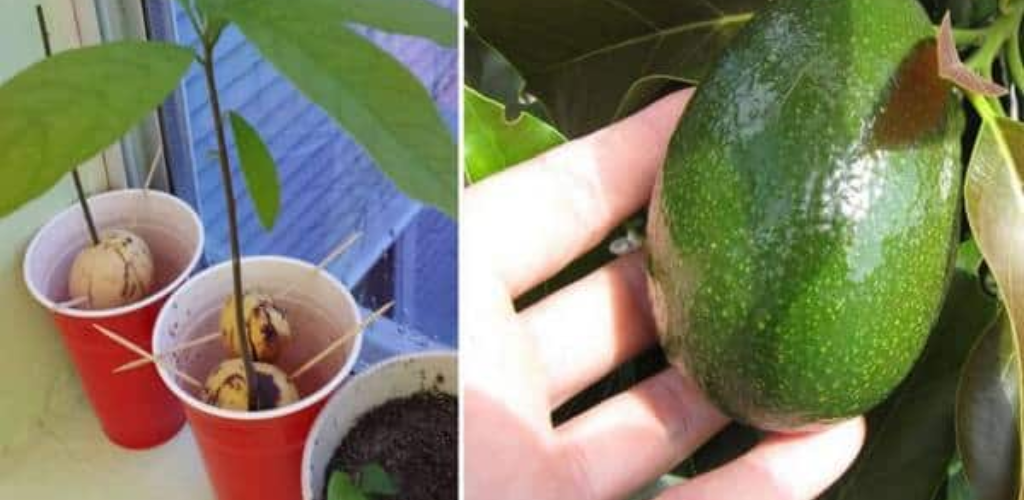How to Grow an Avocado Tree from a Pit?
Growing an avocado by sprouting a pit is actually relatively simple. The main difficulty lies in the choice of the kernel. This is an activity that you will share with your children who will enjoy seeing the evolution of this avocado tree. They can also better understand how the plant develops to produce fruit. You just have to adopt the right method and the right actions to succeed.
1 – GERMINATION IN POTTING SOIL
Place the (cleaned) core directly in light, drained potting soil (remember to line the bottom of the pot with a layer of clay balls) which you will keep constantly moist (but not soggy!). The core should be half buried, point upwards. After a few weeks spent in the heat (20°C), the core splits, a sign that the root is starting to develop; the young shoot will appear a few weeks later.
Advantage of this method: the step of installing the young plant in potting soil is avoided, which at the same time eliminates the (low…) risks linked to recovery.
2 – AVOCADO TREE AND WATERING
Like most plants of tropical origin, watering is an important step because the plant needs water but fears certain excesses.
You will ensure that watering is regular but never excessive, especially at the beginning when the avocado tree is most fragile. The older the avocado tree gets, the less water it will need.
- Spraying the leaves with non-calcareous water (rainwater for example) is ideal when it is hot.
- It is also a good idea to place the pot of your avocado tree on a saucer filled with partially flooded gravel or clay balls. Water evaporation is excellent for the plant.
3 – DISEASES AND PESTS OF AVOCADO
The leaves can often turn brown or black, often at the tips, they can even fall, particularly during cold or cool periods (fall – winter). If not Anthracnose (see below) different causes are possible:
- Lack of water or too dry climate if only the extremities are affected
- The leaves are old and need to be renewed
- Thermal shock (example: moving from the house to the garden)
- Outdoor burns caused by sun or wind
Anthracnose: This is a fungus that causes brown spots on leaves, often on the tips, and develops little by little. It is advisable to remove the affected leaves, if there are enough of them (the impact on a young plant or on a tree is obviously not the same). It is also possible to treat with nettle, horsetail or comfrey manure (2 sprays per week). Bordeaux mixture can also stop this devastating fungus.
Phytophthora cinnamomi: fungus which causes the destruction of the tree. The fungus grows in the presence of humidity and high temperature (27 – 30°C). The first signs of the disease are wilting, yellowing and dead leaves remaining without falling off the plant. treat with an organic fungicide. (More info on Wikipedia)
Red spiders: are in fact mites that feed on leaf cells and reduce the vitality of the tree. The bites of these spiders give a lead-gray color to the leaves. If the attack is significant, we observe a premature fall of the leaves. Spray with water, as they hate humidity.
4 – HARVEST, PRESERVATION AND USE OF AVOCADO
The avocado does not ripen on the tree but only once picked. It can therefore be picked and stored until ripening at room temperature, in a vegetable drawer or in the refrigerator.
